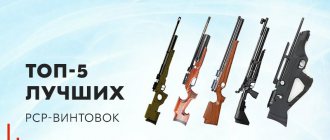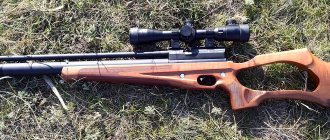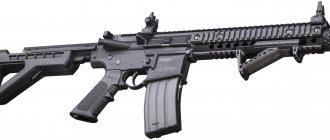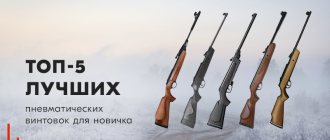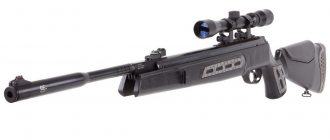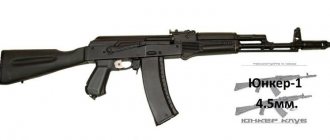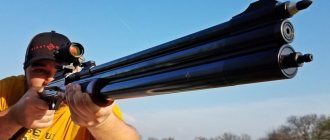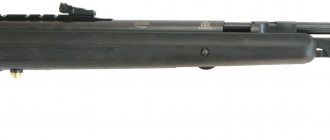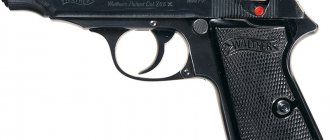For those who are keen on hunting, professional or amateur shooting, in addition to the weapon itself, an optical sight is an important and necessary device. Its functionality includes approaching and marking the target, thereby increasing the speed and accuracy of fire. Due to the demand for such devices, the best manufacturers of weapons and various accessories for them regularly introduce new models to the market, improving and modernizing their characteristics. Therefore, as a rule, when choosing an optical sight, each potential user is faced with the problem of which one is best to buy. In this case, you should study the recommendations of people who have already purchased and used specific models. In this article, based on their assessment, a ranking of the best optical sights for 2022 was compiled.
How to choose the right equipment
When starting to select a suitable device, you should first know what types of sights there are. First of all, their classification is carried out depending on the purpose of use:
- Tactical sights for high-precision shooting;
- For pneumatics;
- For crossbows;
- For firearms.
It is clear that each gun owner has personal criteria for choosing accessories for it, but even knowing the purpose of their use, many of them are faced with the problem of which company and which model is better to purchase. In the case of an optical sight, it is very difficult to give specific advice, but you can indicate what to look for when choosing. In this case, the characteristics of the device play an important role:
- Multiplicity. There are sights that provide constant or variable magnification. The former have greater aperture and image clarity, but can be used when terrain conditions and distance length are known. The latter are characterized by a darker image, so when choosing them, the main criterion should be light transmittance. They are used when the conditions of the application area are not determined.
- Line of sight. The larger it is, the easier it is to find and capture a target. Please note that this characteristic does not depend on the lens diameter. Also, the higher the magnification of the device, the smaller its field of view.
- Exit pupil. It represents a reduced image of the lens, fed through the eyepiece; the larger its diameter, the brighter the image visible to the eye. Equally important is the distance from the pupil or the distance from the eye. Today, the maximum size of this characteristic reaches 13 cm.
- Lens or in other words a system of lenses (two or more). The larger its diameter, the stronger the aperture of the device and the higher the brightness of the image.
- Parallax adjustment (a noticeable change in the position of the aiming mark relative to the aiming point under conditions of changing distance). Sights equipped with it are designed for shooting at long and ultra-long distances.
- Sighting reticle. It can be in the form of a metal stencil made of thin wire or glass with a pattern that is less susceptible to displacement. Helps to optimally align weapons without deviating from the target and has several variations: dot, circle, cross and others. A number of devices are equipped with an illuminated reticle, which increases the light range of the sight and allows it to be used in the dark.
- A system for entering ballistic corrections that performs the function of adjusting the trajectory of a bullet for a specific distance. The correction price is measured in minutes of arc (MOA), which are reflected by the divisions of the correction mechanism on the drums. The greater the distance to the target, the lower the division price should be.
- Protective means against environmental influences. This includes a very important characteristic: impact resistance (including resistance to recoil). Equally important are sealing (protection from moisture) and nitrogen filling (protecting lenses from fogging).
The above lists only a small part of the main characteristics of optical sights. Purchasing such a device, with all its extensive parameters, is quite a difficult task, and in order not to make a mistake when choosing, it is first of all important to understand its intended purpose. Only then should you pay attention to the cost and popularity of the device. After all, the best scopes are not always expensive and popular models.
Top 7 scopes for driven hunting
Unfortunately, good optics cannot be cheap, and beaters are no exception. The problem is aggravated by the fact that in the pen you are responsible not only for your results, and the prey lost due to poor-quality sights will become a reason for well-deserved criticism from the entire team.
But there is good news - we tried to select suitable scopes in ascending order of price, and we hope that this will help you choose the ideal model that suits your budget!
Hakko BED-18-30
Collimator sight Hakko BED-18-30 9,830 ₽
Collimator sight Hakko BED-18-30
Add to cart
Type - collimator
Multiplicity -1x
Weight - 130 grams
One of the simplest and most affordable closed collimators on the market. It has a satisfactory aperture ratio, contrasting anti-reflective coating, a bright reticle and a reliable design - everything you need for an entry-level collimator. And besides, it’s a very reasonable price.
Leapers Accushot Premium 1.5-6×44
Scope Leapers UTG Accushot Premium 1.5-6×44 Mil-Dot TS EZ-TAP IE 36 color with ring 13,512 RUR
Leapers UTG Accushot Premium 1.5-6×44 Mil-Dot TS EZ-TAP IE 36 color sight with ring
Notify about arrival
Type - optical
Multiplicity - 1.5-6x
Weight - 646 grams
An entry-level budget camera that compensates for the not-so-high aperture ratio with a large lens size. Unfortunately, this does not have the most positive effect on the weight - it weighs almost 100 grams more than its more famous competitors.
However, if the extra weight doesn’t particularly bother you, then the scope will provide high-quality multi-level illumination, a good field of view, a convenient reticle with engraving on the lens, and a fairly reliable design that can withstand the recoil of most popular rifled calibers up to 7.62x39.
Holosun Paralow
Collimator sight Holosun Paralow dot 2MOA Weaver RUB 21,500
Collimator sight Holosun Paralow dot 2MOA Weaver
Add to cart
Type - collimator
Multiplicity - 1x
Weight - 120 grams
An unusual red dot sight that is powered by two power sources - a regular battery and a small solar panel. It switches to the battery only when there is not enough light, which significantly saves its charge - manufacturers claim a crazy 200,000 hours of operation on one battery!
Of course, it is good not only for its energy independence, but also for its contrasting optics, lack of pararalax and a bright variable aiming point. By the way, sights from Holosun can be used together with NVGs.
Nikon Prostaff 7 1-4×24
Sight Nikon Prostaff 7 1-4×24 M IL R4D 44,990 RUR
Rifle scope Nikon Prostaff 7 1-4×24 M IL R4D
Notify about arrival
Type - optical
Multiplicity - 1-4x
Weight - 450 grams
A relatively inexpensive camera with good aperture and Nikon's trademark endurance. High shock resistance, moisture protection and a lightweight body are combined with convenient controls, fast focusing, and excellent optical performance. One of the best pens in terms of price and quality ratio.
Aimpoint Micro H-1
Collimator sight Aimpoint Micro H-1 2 MOA Weaver RUB 49,590
Collimator sight Aimpoint Micro H-1 2 MOA Weaver
Add to cart
Type - collimator
Multiplicity - 1x
Weight - 84 grams
The mighty little guy from Sweden, despite his size and weight, easily beats out his larger comrades. It has a very wide field of view and a bright dot visible from any position, so you can place it anywhere on the weapon - you can even place it at a slight angle on the handguard to duplicate the weapon's optics at short ranges.
It is very durable and can withstand any recoil up to .50 BMG, and is also completely resistant to falls and getting into water.
According to the developers, the battery can power the sight for 50,000 hours without recharging!
Nikon Monarch 7 1.5-6×42
Sight Nikon Monarch 7 1.5-6*42 IL R4 64,490 RUR
Scope Nikon Monarch 7 1.5-6*42 IL R4
Notify about arrival
Type - optical
Multiplicity - 1.5-6
Weight - 560 grams
One of Nikon's top scopes, a high-aperture sight with a large, bright lens and an equally large eyepiece. It can quickly focus when changing magnification and reset corrections with one click. Like all top-end optics from Nikon, it is made in a magnesium body, and is not afraid of temperature changes, moisture and drops - of course, within reasonable limits.
Results
The well-deserved popularity of optical sights among owners of rifles and shotguns is explained, first of all, by the fact that only with their help can one truly unleash the potential of a weapon. It is worth remembering that it is very difficult to find two similar devices, and even more difficult to find two identical ones. They are all different from each other, even if they are too similar in appearance. In addition, there are devices that look identical, have similar characteristics, but differ in price many times over. But each of them has its own purpose: some are universal, suitable for various types of hunting weapons, for carbines and pneumatics, while others are intended for use only for recreation, or in the sports field (for example, airsoft sights) or even for sniper rifles. Therefore, before buying a scope, it is important to understand exactly for what purpose it will be used. But, and then, you should study the description of the best devices, compare the advantages and disadvantages, find out how much it costs and reviews. To simplify the search, a rating of the best optical sights has been compiled based on the characteristics and user ratings, presented in this article.
Types of smooth-bore weapons and sight mounting options
Smoothbore weapons have many varieties. The difference lies in the number of barrels and their location, as well as in the use of different calibers and reloading method.
An important factor for selecting a sight for a smooth-bore weapon is its installation. So many guns were made with the calculation of aiming exclusively using a mechanical sight, which often affected the lack of seats. To solve this issue, consider popular smoothbore shotguns.
Double-barreled hunting rifle IZH-27
The IZH-27 shotgun has a number of features. Firstly, it is a double-barreled shotgun with a vertical position, and secondly, reloading is carried out by breaking the barrel. There is no seat on the receiver. But the presence of a ventilated rail allows you to install sights. Mounting scopes to a vented rail is quite easy, which has led to the popularity of adapter mounts, such as:
Transition strip from ventilated to Weaver UM-07. This adapter bar allows you to use the mechanical sight without dismantling it.
It is also possible to buy a red dot sight with an already installed mount for a ventilated rail, the most popular ones are:
PFO 1x25 collimator sight. Operates without batteries and is very lightweight. Read more…
Pilad P1x42 collimator sight for ventilated rail. The collimator has a large lens of 42 mm. Read more…
The use of a vented rail for many shotguns has become an easy solution for mounting a scope on a shotgun. But this type of mount is only suitable for installing red dot sights. This is due to the weight limitation of devices that are installed on a ventilated bar. For night vision sights and in the absence of a seat on the IZH-27 receiver, the Novosibirsk plant has manufactured a unique bracket, which is installed by compressing two gun barrels:
Bracket for Vertical Weaver smoothbore. The bracket is installed by wrapping around two trunks. Read more…
MP-153/155 self-loading smoothbore shotgun
The MP-153 hunting rifle is characterized by a swinging fore-end or, in other words, a pump-action reloading method. The presence of a ventilated strap, as described above, is already an installation method, and for heavy night lights there are adapter brackets installed using standard receiver pins:
Weaver bracket for MP-153. The bracket has a cutout for the bolt handle. Read more…
Read more about installing this bracket in the article dedicated to this weapon.
Hawke Endurance 30 WA 1-424
The sight can be mounted on a weapon with any recoil force. Suitable for tracking and hunting animals.
Description:
- 28.2 cm;
- 493-518 g;
- 24mm lens;
- 102mm removal;
- 24-6 mm (exit pupil);
- 41.5-10.4 m (field of view at 100 m);
- 1/4 (increase);
- L4A (sighting reticle etched on glass);
- $500 (cost).
Advantages:
- adjustable backlight;
- 16-18 layers of antireflective coating.
Flaws:
- no parallax adjustment;
- Only for hunting at short distances.
Yukon Sentinel 2.550
Optical night vision model. Suitable for hunting from 200 meters.
Main characteristics:
- 27 cm, 0.98 kg, titanium case;
- 50 mm lenses;
- 45mm offset point of sight;
- 6 mm (exit pupil diameter);
- 23 m (field of view);
- x 2.5 (constant multiplicity);
- ballistic reticle with adjustment;
- $570.
Pros:
- built-in laser IR illuminator;
- backlight;
- instant switch function.
Minuses:
- high price;
- heavy weight (about 1 kilogram).
Brief conclusion on the topic
There are plenty of options for pneumatic sights, but the most popular for fun and hunting are optical sights. The devices are suitable for long-range shooting and increase accuracy. But they will not be effective in all conditions. For example, at medium and short distances, a shooter will prefer a collimator to optics. The choice of device depends on the user’s preferences and the conditions of use of the pneumatic weapon.
You shouldn’t settle for low-price options, or pay more, for example, for the magnification of optics. It is recommended to study the technical documentation for the devices. This will give the user a lot of useful information that will help increase the life of the device.
The main thing is to take into account the characteristics of the pneumatics and guidance system, then the choice will be made correctly!
July 13, 2022
Leapers TF2+ 4×32
The optical sight is suitable for aiming at close and medium distances. Can be used for sport shooting and hunting.
Main features:
- 30 cm / 408 g, aluminum;
- 32mm lens;
- 86mm removal;
- 8 mm (exit pupil diameter);
- Mil-Dot-mesh;
- 4x (constant multiplicity);
- 9.8 m (field of view from 100);
- $96 (price).
Advantages:
- multilayer coated coating;
- backlight
Flaws:
- no mark brightness adjustment;
- not for shooting at a moving target.
What is remarkable about the Izhevsk rifle MP-532
Sports air rifle MP-532
This device works on the principle of pre-pumping air (a special lever is responsible for compressing it). The rifle has a fixed barrel and the most popular caliber is 4.5 mm. Shooting is carried out with bullets weighing 0.5 g, which are inserted manually and fly out at a speed of 160 meters per second. The trigger mechanism is single-shot.
More characteristics:
- The barrel is made of durable steel. It has 12 grooves and is 40 cm long.
- The sight is mechanical, adjustable using micrometric screws.
- The trigger mechanism can be adjusted in terms of force (from 3.9 to 9.8), stroke and trigger features. You can also change the position of the trigger. Its stroke length is at least 0.2 mm.
- A simple cocking mechanism with a force of 69.
- The material of the butt and fore-end is laminated birch. The butt pads can be adjusted (angle, vertical and length).
- The total length of the product is 1.17 m, weight is 5 kg.
- The power is less than 7.5 joules.
- Manufacturer : FSUE IZHEVSK MECHANICAL PLANT.
- The price on the manufacturer’s website is 29,210 rubles.
What's included
In addition to the rifle and passport, the cardboard box contains a cleaning rod, a screwdriver, a drift, two O-rings and a cuff.
Device, disassembly and assembly
This device is of the compression type, so it has a reservoir into which air is pumped - a compression cylinder.
Before firing, the injection lever is pulled forward (at the same time the piston and cuff also move, and air is sucked into the cylinder), and the lid is opened. The lever is returned (this compresses the air in the cylinder), the bullet is inserted, the lid is closed and secured.
For partial disassembly, unscrew two screws and remove the stock, then separate the barrel casing, which is also held on by two screws. We put the engine in the forward position, remove the traction. Now you need to remove the washers and knock out the axles holding the injection lever and clutch. We remove them, and then pull the joint with the piston out of the cylinder. All that remains is to remove the cover rod, which is secured with a screw, and then the engine with the spring. We assemble everything exactly the same way, only in reverse.
Advantages
A rifle with a diopter sight guarantees a number of advantages in operation. These include the ability to focus vision on far and close objects. This solution allows you to check its effectiveness with a simple test:
- While holding your index finger 300 millimeters from the eye, close the second organ that you are not aiming with.
- Try to synchronize the tip of your finger, which acts as the rear sight, with a target located several meters away (front sight).
- If you coordinate your gaze on the finger, the target will blur, and when focusing on the target, the finger will visually appear blurred.
- Add to the result obtained the main target at a distance of 50 meters. As a result, vision will physically resist the resulting insoluble problem.
Another nuance is related to the fact that it is necessary to focus your gaze not only on the rear sight, but also on the object being processed through the front sight. This makes it possible to more accurately aim the weapon with minimal effort.
Story
The predecessors of the optical sight are the telescope and spotting scope, which were invented in Holland at the beginning of the 17th century.
The world's first optical sight was invented in 1745 by Russian mechanical engineer A.K. Nartov, who was working at the Admiralty Department at that time. He called his invention “A mathematical instrument with a perspective telescope, with other accessories and a spirit level for quick guidance from a battery or from the ground at the shown location to the target horizontally and along the levation.”
Since the 1860s, rifle telescopes, as optical sights were called at that time, began to be widely used on hunting rifles. Optical sights were first used for military purposes in 1861-1865, during the American Civil War.
The modern type of optical sight as we know it today was created in 1880 in Austria-Hungary by August Fiedler.
The first variable magnification sight was created in 1949 by Frederic Kales. In 1972, she developed and patented multilayer coating for optics.
Optical sights are constantly being improved; more and more new materials and technologies are used in their design and production, new functions appear, and capabilities are expanded.
Recommendations
The rear sight and front sight of the sighting mechanism do an excellent job when firing at a distance of 100 to 150 meters. This is true not only for professionals, but also for novice shooters. For example, a rifle with a Thompson/Center brand Englander diopter sight is equipped with a device on the neck of the butt. The distance from the eye is approximately 50 millimeters. This distance is due to the fact that when fired, the rear sight does not injure the owner after recoil and allows for good accuracy and accuracy. The latter figure is 51-76 mm at one hundred meters.
When hunting a deer or similar animal, the small diameter of the sight on this type of weapon, together with the black color of the front sight, makes it difficult to gain focus, and the shooter has to squint. In a illuminated place this problem disappears. The optimal size in this case would be a rear sight with a hole with a diameter of 4.8 mm. This makes it possible to quickly adjust the direction to the target, even in dim light.
Vortex Crossfire II 4-1244
Optical model for aiming from medium and long distances. Suitable for hunting and sport shooting.
Characteristics:
- 33.3 cm, 0.48 kg;
- 44mm lens;
- 99mm removal;
- 11-3.67 mm (in/out diameter);
- 8.23-2.8 m (field of view);
- V-Plex cross (sighting) reticle;
- 4/12 (variable magnification);
- $220.
Pros:
- multi-layer coating Fully Multi Coated;
- backlight;
- fast focusing Fast Focus.
Minuses:
- not for close aiming;
- There is no illumination of the aiming mark.
Yukon Jaeger 3-1256
A universal sight for hunting and sport shooting. Suitable for aiming from a distance of 600 meters.
Description:
- 35.7 cm, 680 grams;
- 56 mm lens;
- 90mm removal;
- 16-4.6 mm (in/out diameter);
- 3/12 (variable magnification);
- 12-3 m (field of view);
- 4 grid options;
- $560.
Advantages:
- enlightenment Multi Coated;
- center point illumination;
- large correction range;
- NVD compatibility.
Flaws:
- a short review;
- high price.
Leupold VX-R 2-7x33
The optical sight is suitable for aiming even in the dark. Inside the tube, instead of nitrogen, there is an Argon/Krypton gas mixture.
Sight Features:
- 28.7 cm, 360 grams;
- 33mm lens;
- 94mm removal;
- 16.5-4.7 mm (h/h diameter);
- 13.3-5.4 m (field of view per 100);
- FIREDOT DUPLEX (reticle);
- 2/7 (variable multiplicity);
- $946 (price).
Advantages:
- the dot in the center of the crosshair is highlighted;
- multi-layer coating DiamondCoat2;
- push-button adjustment;
- MST motion sensor.
Flaws:
- narrow view;
- not for close aiming.
